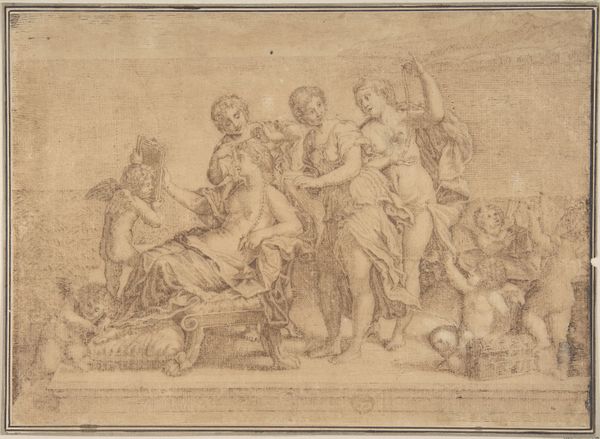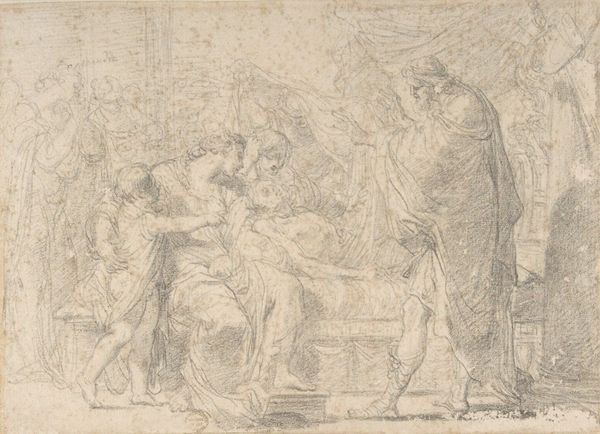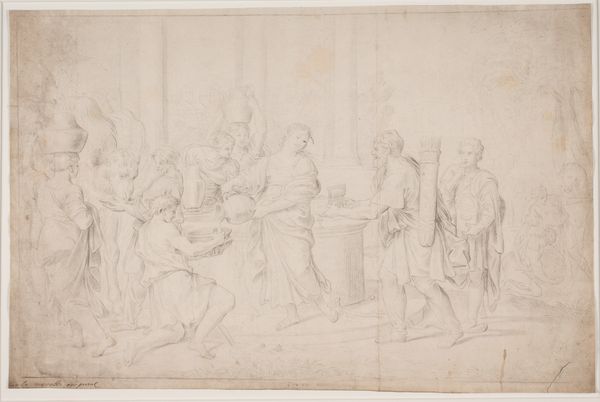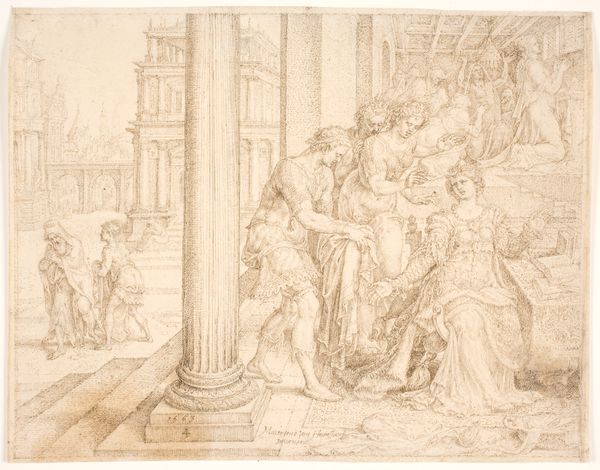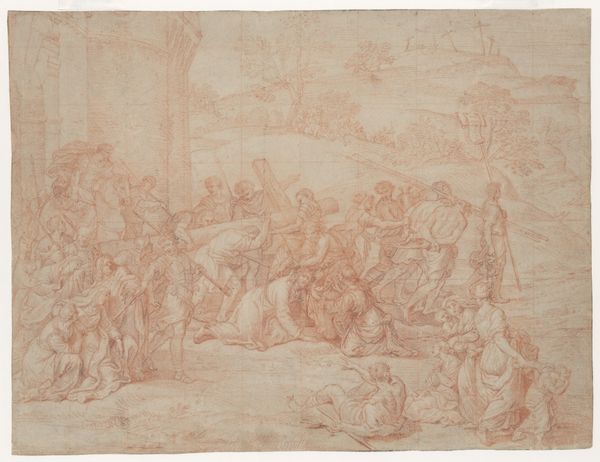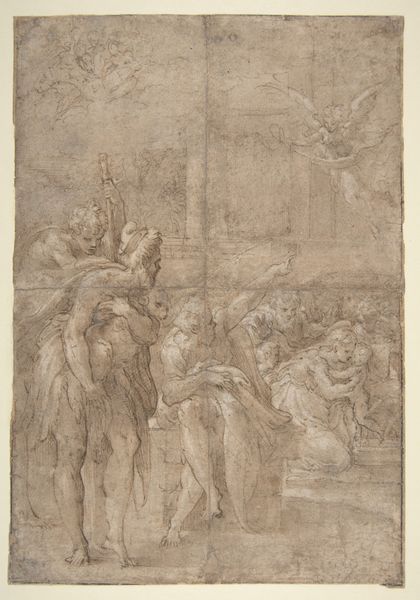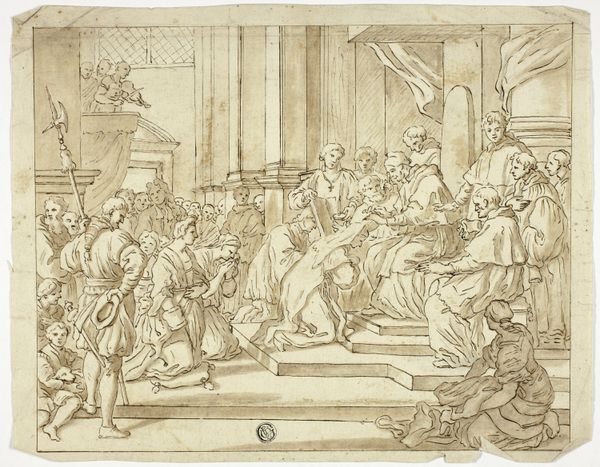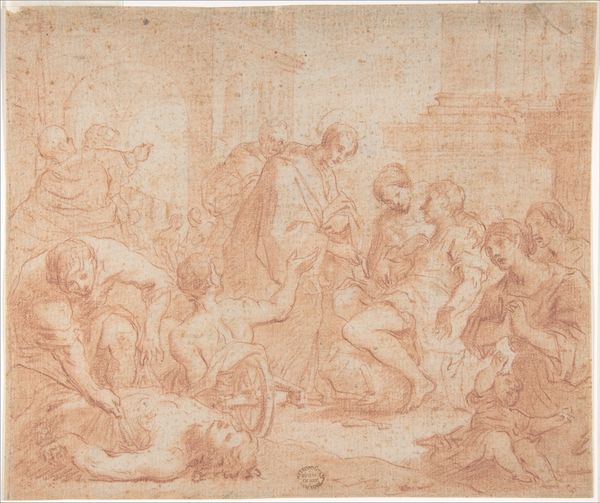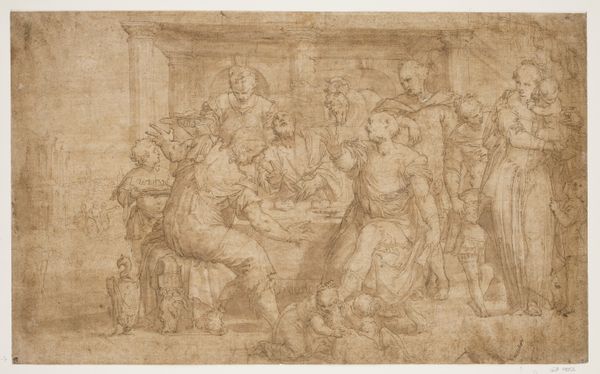
drawing, print
#
drawing
# print
#
figuration
#
11_renaissance
#
history-painting
Copyright: Public Domain
Curator: This piece, a 19th-century drawing or print entitled "Minerva Beautifies Ulysses," is captivating, isn’t it? Made by an anonymous artist, its ochre tones immediately recall classical narratives. What catches your eye first? Editor: Definitely the figures in the center; there’s so much implied motion. The textures feel smooth and soft somehow, even though it's just lines on paper. What's your take on the narrative, if you don't mind? Curator: Well, "Minerva Beautifies Ulysses" speaks volumes about the ancient world’s obsession with divine intervention, doesn’t it? Here, we see the goddess Minerva, or Athena as the Greeks would say, lending a hand—or perhaps, a shimmering aura—to Ulysses, better known to us as Odysseus. Imagine the scene: our hero, fresh from who-knows-what trial, about to step back into the spotlight, maybe even clean up before facing the music at home. There's also something beautiful about how we never really know for sure how much of his makeover is divinely inspired. What do you think about the other figures, how do you interpret their role? Editor: I guess they are attending to him, but they seem a little detached… Curator: Ah, yes! They highlight the odd intimacy between Ulysses and the goddess! But it raises the question: What does "beauty" really mean in this context? Is it merely physical, or does it represent something deeper, a divine approval of sorts? Editor: That’s a thought! I never considered that "beauty" might carry that weight. This wasn't simply an act of grooming, but divine validation... almost political, maybe? Curator: Precisely! And sometimes, isn't that what art is all about—a whisper of divinity in the everyday? It encourages you to rethink stories you think you know so well! Editor: Exactly, I appreciate it when art does that! Thank you for showing me different angles of analysis.
Comments
No comments
Be the first to comment and join the conversation on the ultimate creative platform.

